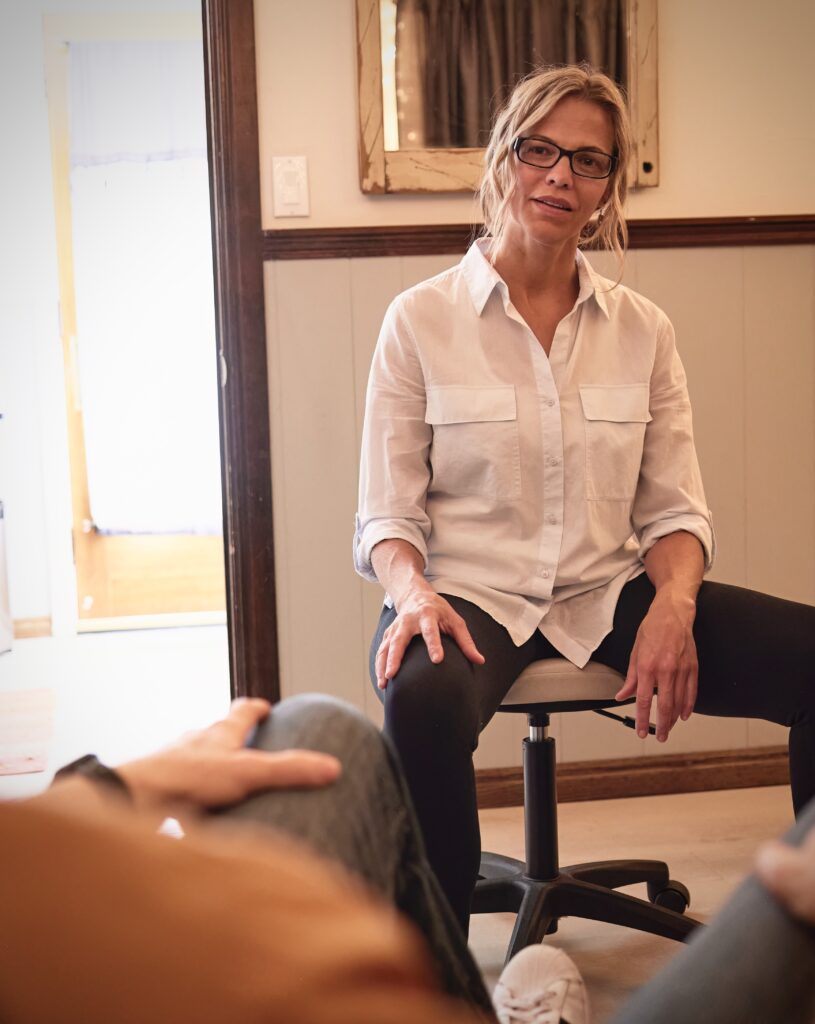What Is Somatic Therapy?
I really love this question. Why? Because the answer will help you understand how to find the best somatic approach to meet your unique needs. It will also help guide you through all the options out there with a discerning eye. Read on to learn more.
“Therapy” is in a Licensed Domain
In it’s true meaning, therapy is “the treatment of disease or disorders, as by some remedial, rehabilitating, or curative process”. In the state of Utah, one must have a valid license to be able to “treat” a sickness or disorder. For example, only licensed health care providers (i.e., doctors, nurses, nurse practitioners, etc.) can treat disease. Only licensed mental health care professionals (i.e., psychotherapists, psychiatrists, psychiatric nurse practitioners) can treat mental illness. I think you get the point.
There are also forms of therapy that are not treatments but still require a license. My license in massage therapy is a good example. I am licensed to offer massage but it is not a treatment since 1) it is not intended to cure disease and 2) it is not administered by a licensed medical health care provider.
“Therapy” Has Become a General Term
It’s important to be clear on these technicalities to discern which kind of service you need and which kind of provider is qualified to offer it. It’s especially helpful because the term “therapy” is used so casually in contemporary language we can easily forget it’s a term designated for use within the a professionally licensed domain. For example, we often say “retail therapy’ when referring to shopping as a mood-booster. We do that because the word therapy has come to mean anything that helps us feel better.
So What is Somatic Therapy?
Somatic therapy is another example of using the word “therapy’ in a general way because somatic therapy does not actually exist. Wait, what? It’s true. There is no accredited school in the United States that offers education toward licensure in somatic therapy. Somatics is still an unregulated and unlicensed field. Anyone can say they are a somatic professional without having even looked up the definition of “somatic”. Really. More on that later.
For now, let’s summarize with this: when people use the term “somatic therapy” they are almost always referring to somatic psychotherapy. A licensed mental health care professional who has taken certified somatic trainings can claim to offer somatic psychotherapy as a “treatment”. Why? Because they have a license and have been trained to do so. If you are vetting someone for somatic support who claims to be a somatic therapist or to offer somatic therapy but does not have a valid license in healthcare (with actual somatic trainings to back it up), keep looking.
Hot tip: the word “therapist” means the provider has a state-regulated license (e.g., physical therapist, massage therapist, occupational therapist, etc.). The word “practitioner” means they don’t.
Somatic Trainings Are for A Wide Variety of Professionals
Somatic trainings often accept professionals from a wide variety of fields, including psychotherapy. Psychotherapists are probably best known for it because they commonly work with clients who have a trauma history. This is especially true because trauma has historically been viewed as a disease of the mind. Increasingly, however, it is understood that trauma dysregulates the nervous system which weaves its way throughout the entire body. That is why more and more, professionals outside the field of psychotherapy are taking somatic trainings. These are people working up close and personal with bodies and traumatized nervous systems—medical workers; addiction counselors; spiritual directors and clergy; teachers and public educators; yoga instructors and other bodyworkers, etc. Somatic trainings educate these professionals on the nervous system’s threat-safety responses so they can become trauma-informed and ultimately be more effective at what they do.
So, Different Kinds of Professionals Offer Somatic “Therapy”?
Not exactly. I know this may be confusing but hang with me for one more paragraph. The best summary of what somatic “therapy” is is when the given professional is explicitly working to improve the regulation (a.k.a. “performance” or “autonomic function”) in your nervous system. They are supporting your nervous system in enhancing its tone, capacity and resilience. In some ways, it’s like personal training for your nerves in the same way that traditional personal training is available for your muscles and bones.
Some professionals (e.g., teachers, dentists, nutrition counselors, etc.) who have completed somatic trainings do so to become “trauma-informed” because they work closely with people who have compromised nervous systems. But they are not offering somatic “therapy” as a way to help their clients improve regulation in their nervous system. They take somatic trainings to be trauma savvy and work more conscientiously with their given populations.
Does Salt City Bodyworks Offer Somatic Therapy?
No. That’s the short answer. Why? Because I am a psychologist but not a licensed clinical psychologist. Remember, there is no advanced degree toward licensure for somatic psychology. The graduate school I went to had a somatics program but licensure in the field was (and still is) non-existent.
So what do I offer then? I provide one-on-one somatic sessions to help you improve regulation in your nervous system as described above.
How do I claim to be qualified to offer somatic sessions? Apart from my master’s degree, I finished a three-year program to become a Somatic Experiencing Practitioner. I also completed an additional three years of training to become a Master Level NARM Professional. Both Somatic Experiencing and NARM are the most recognized somatic trainings on a global level. It’s not therapy because I do not treat trauma—I help your nervous system recover from it.
Are Somatic Sessions Right for Me?
I would love to explore that question with you! A somatic approach can be helpful for many different reasons. If you’re currently in psychotherapy, somatic work can improve strength in your nervous system so you get the most out of your sessions. You may be interested in trying somatics because you feel like you’ve exhausted the benefits of psychotherapy. As a stand-alone, it can strengthen your mind-body connection in general so you feel more present in your life. My other blog entries explore many facets of a somatic approach and reasons you may want to try it. You can also click here to schedule a 25 minute consultation if you’re ready. I look forward to connecting with you.
Summary
Somatics is still an unregulated field that does not offer or require licensure to practice. Anyone can say they are a somatic practitioner without one bit of education or training. Buyer beware.
Professionals from varied fields may take somatic trainings. They do so to serve the populations they work with in a trauma-informed way. Some of these professionals take it one step further and offer services to directly help their clients enhance regulation in their nervous systems. They often advertise the title of “somatic practitioner”.
If a provider is advertising somatic “therapy” in the state of Utah, they need to have a license in mental health care to back it up. In this case, somatic therapy is short for somatic psychotherapy.
Learn More






